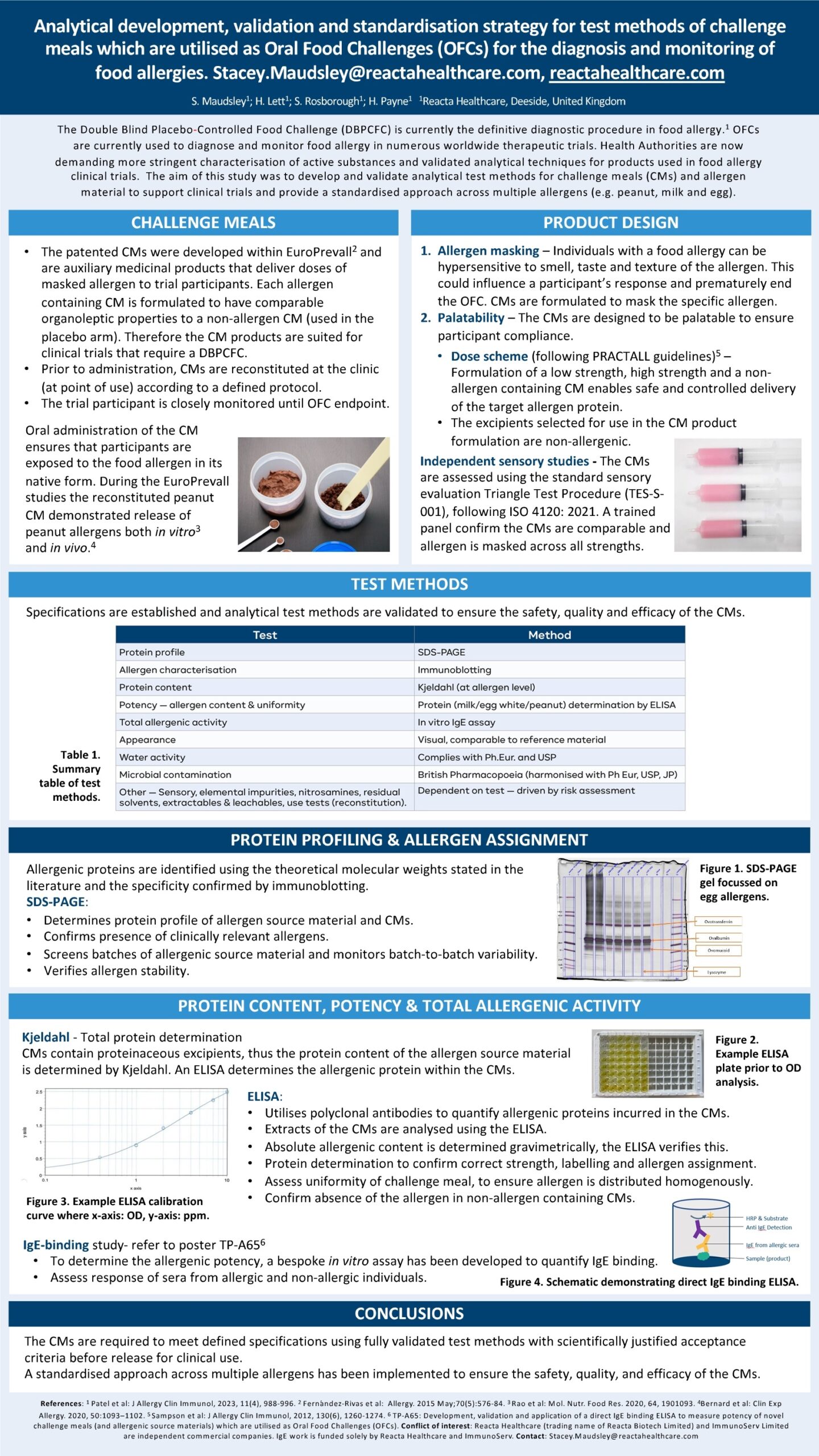Analytical development, validation and standardisation strategy for test methods of challenge meals which are utilised as Oral Food Challenges (OFCs) for the diagnosis and monitoring of food allergies
S. Maudsley; H. Lett; S. Rosborough; H. Payne
The double-blinded placebo controlled food challenge is currently the gold standard for food allergy diagnosis. Within the industry, there is an unmet need to standardise oral food challenges (OFCs) and regulatory authorities are requiring standardisation due to the usage of OFCs in clinical trials, where product safety, quality and efficacy is paramount.
Reacta Healthcare’s strategy for standardisation of OFCs includes a quality by design approach and analytical testing of critical quality attributes. The quality by design approach is taken during product formulation, where product palatability, masking of allergen and dosing scheme is verified.
The analytical testing of critical quality attributes involves developing and validating test methods according to pharmaceutical guidelines.
Examples of the test methods include (but are not limited to) the following:
- SDS-PAGE – A method used to identify which allergenic proteins are present in the active substances and the challenge meals. Confirms batch to batch consistency and an indicator of protein stability.
- ELISA – The method specifically quantifies the amount of allergenic protein present in the challenge meals, confirming product strength.
- In vitro IgE assay – IgE has an important role in the immune response within allergic individuals. The assay utilises sera from allergic individuals to verify whether the active substance and the challenge meals elicit an immunological response.
- Microbial testing – To determine whether the challenge meals are free from contamination and are safe for consumption.
In summary, the standardised approach utilised for design and testing of challenge meals ensures product safety, quality and efficacy.
CLICK TO ENLARGE

